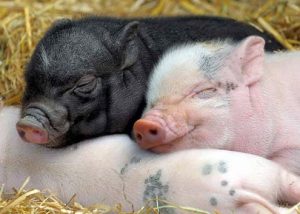Pigs are known to be quite intelligent animals. They eat both plants and animals, using their snout as a tool for searching for food. Newborn pigs recognize their mothers voices, and can even recognize their names by the age of two weeks. Pigs communicate with one another, using more than 20 different inflections. They will snuggle close to each other, and dream when they sleep. They can run up to 11 mph and squeal as loud as 115 decibels. Pigs have a lifespan of 10-15 years, though are slaughtered around six months of age. There are millions of pigs on the planet, and the majority are confined to a life of pain and suffering.
THIS POST CONTAINS GRAPHIC IMAGES.
Farm animals typically only see the sun as they board the truck delivering them to be slaughtered. Electric prods are often used to direct the pigs onto trucks and into cages. Many die during transportation due to extreme heat or cold, lack of food and water, ammonia fumes, and diesel exhaust. An industry report in 2006 found more than 1 million pigs die each year from transportation alone.
Pigs are kept in cages approximately 7 feet long and 2 feet wide. Mother pigs are moved to cages large enough to the pig the lie down – though still not wide enough to even turn around. Piglets are separated as young as 10 days old, and taken to pens to either become meat or used for breeding. Male piglets are castrated in the U.S. and many have their tails and ears removed.
Typical slaughterhouses kill about one thousand pigs per hour. Workers do their best to knock the pigs unconscious, using a slaughtering mask (bolt gun), electric stunning, carbon dioxide, or a direct blow to the skull using a club or poleaxe. Many pigs remain conscious due to the large number the workers must handle. Pigs are then sent to be bled out. Severing the major arteries of the neck and then hanging the body drains the pig of its blood. Immediately after being cut, the pig is sent to scalding tanks to remove hair and soften the skin. After the scalding tank, the pigs are completely void of life and are ready to be cut.
Even in the most “humane” slaughterhouses, these basic steps are all the same. Simply buying “humane meat” is not enough to combat these conditions. Check out the guide for slaughtering livestock provided by the Food and Agriculture Organization: http://www.fao.org/docrep/003/X6909E/x6909e09.htm
Most people are against animal abuse, yet their buying habits contribute to these torturous practices. The best way to put an end to the inhumane practice is by eliminating meat from your diet and spreading the word. Is it surprising to know the conditions of your meal before it arrives at your plate? Or is it the “circle of life”?



